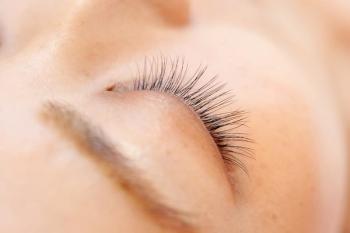
Implication of secondhand smoke in greater risk of development of myopia in Chinese children
A study reveals that secondhand smoke significantly increases the risk of myopia in Chinese children, highlighting the need for smoke-free environments.
A Chinese investigation emphasized the importance of eradicating secondhand smoke to prevent myopia development in children,1 reported first author Yuchang Lu, MD. Lu is associated with the Institute of Medical Technology, Peking University Health Science Center; Department of Ophthalmology, Peking University People’s Hospital; College of Optometry, Peking University Health Science Center; Eye Disease and Optometry Institute, Peking University People’s Hospital, and Beijing Key Laboratory of Diagnosis and Therapy of Retinal and Choroid Diseases, all in Beijing, China.
Lu and colleagues pointed out that although the mechanism of myopia is not fully understood, genetic and environmental factors are believed to influence its development.2 “Investigating the risk factors for myopia and enhancing modifiable environmental predictors are crucial for mitigating the myopia epidemic,” they stated in their article in BMC Ophthalmology.
The study under discussion is the first cohort study established in China that examines the relationship between exposure to secondhand smoke and the onset of myopia, which offers a unique perspective and contributes significantly to filling the existing knowledge gap in this field. Previous studies of secondhand smoke have been reported, but the conclusions were not definitive,3-6 according to Lu et al.
Study design
The authors included 232 children aged 5 to 10 years in a retrospective cohort study. Of those, 128 had been exposed to secondhand smoke and 104 had not been. The children were followed at evaluations conducted at 3, 6, 9, and 12 months and focused on changes in the spherical equivalent refraction and axial length. The investigators also collected information in questionnaires from medical records on behavioral and parental factors that included the parental myopia status, parental education level, daily time spent on near work, and outdoor activities.
The results showed that the mean spherical refraction myopic shift in the children in the group exposed to secondhand smoke was - 0.64 ± 0.41 diopters (D)/year, and that in the children not exposed was -0.47 ± 0.52 D/year). The difference reached significance (P = .004).
In addition, the mean axial length in the children exposed to secondhand smoke elongated significantly more compared with the unexposed group (0.26 ± 0.14 mm vs. 0.20 ± 0.13 mm, P = .002).
Multivariate linear regression analysis showed that the exposure to secondhand smoke (β = 0.053, P = .002), the baseline spherical equivalent refraction (β = -0.054, P = .001), and parental myopia (β = 0.028, P = .036) were significant predictors of the axial elongation at 12 months.
Lu and colleagues concluded, “The results of this retrospective cohort study suggest that secondhand smoke exposure is associated with an increased risk of developing early-onset myopia among nonmyopic children, which indicates that the public should give greater attention to the issue of exposure to secondhand smoke. For parents with children, quitting smoking is not only beneficial for their own health but also crucial for the well-being of their children. It is hoped that more people will take steps to protect children from the harmful effects of secondhand smoke and create a healthier environment for children.”
References
- Lu Y, Li X, Deng Y, Wang K, Li Y, Zhao M. Secondhand smoke (SHS) exposure is associated with an increased risk of developing myopia among nonmyopic children in China. BMC Ophthalmol. 2025;25:65.doi: 10.1186/s12886-025-03890-7.
- Mutti DO, Mitchell GL, Moeschberger ML, et al. Parental myopia, near work, school achievement, and children’s refractive error. Invest Ophthalmol Vis Sci. 2002;43:3633–40.
- Chua SYL, Ikram MK, Tan CS, et al. Relative contribution of risk factors for early-onset myopia in young Asian children. Invest Ophthalmol Vis Sci. 2015;56: 8101-7.
- El-Shazly AA Passive smoking exposure might be associated with hypermetropia. Ophthalmic Physiol Opt. 2012;32:304-7.
- Saw SM, Chia K-S, Lindstrom JM, Tan DTH, Stone RA. Childhood myopia and parental smoking. Br J Ophthalmol. 2004;88:934-7
- Stone RA, Wilson LB, Ying G-S, et al. Associations between childhood refraction and parental smoking. Invest Ophthalmol Vis Sci. 2006;47:4277-87.
Newsletter
Want more insights like this? Subscribe to Optometry Times and get clinical pearls and practice tips delivered straight to your inbox.


















































.png)


